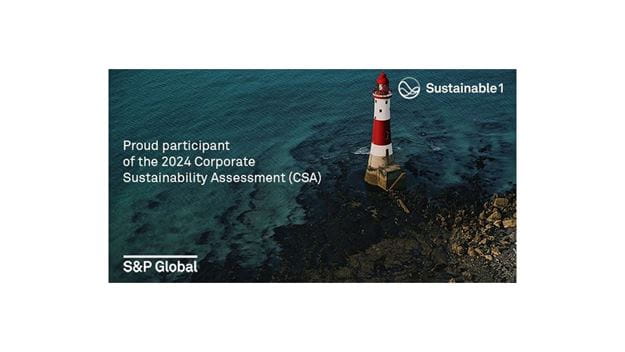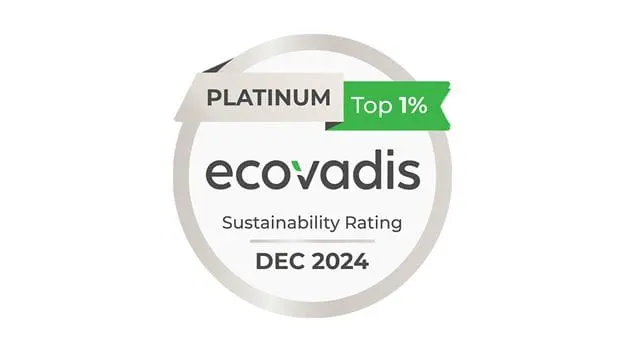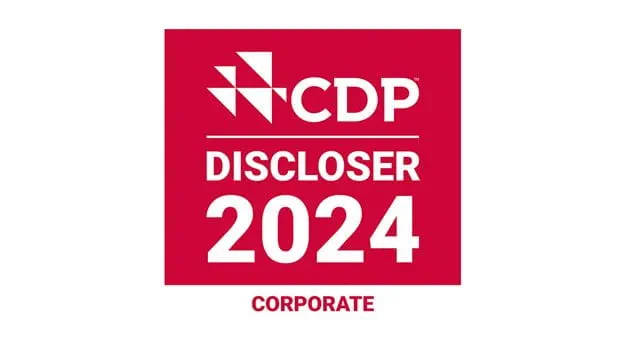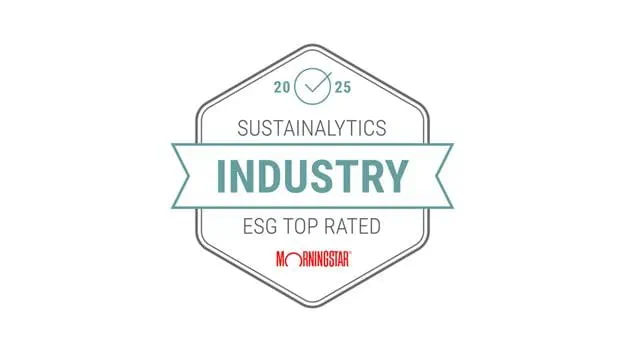Among the best rated companies in our industry
We are continuously cooperating with leading sustainability rating agencies, such as MSCI, Sustainalytics, EcoVadis, the Carbon Disclosure Project (CDP) and S&P Global. We are proud to be rated among the best performing companies in our industry.
We are assessed by some of the leading
Sustainability rating agencies
| Rating agency Scoring scale |
Performance 2024 |
Performance 2023 |
Performance 2022 |
|---|---|---|---|
| EcoVadis 0-100 |
81/100 (Platinum) |
78/100 (Platinum) |
74/100 (Gold) |
| CDP - Climate Change F-A (A is the highest score) |
B | A- | B |
| MSCI CCC-AAA (AAA is the highest score) |
AA | AA | AA |
| Sustainalytics 50-0 (the lower the better) |
12.9 (low risk) |
13.0 (low risk) |
14.1 (low risk) |
| S&P Global 0-100 |
53/100 | 53/100 | 53/100 |
We are guided by recognised frameworks and governance structures
As a global leader in the transport and logistics industry, we need to ensure a high level of transparency and accuracy with our reporting of sustainability data. To achieve this, we are guided by a number of internationally recognised frameworks and reporting standards in progressing towards our sustainability goals.
Task Force on Climate-related Financial Disclosures (TCFD)
Inspired by TCFD, we provide the reliable information needed by investors and other stakeholders to understand climate-related risks and opportunities faced by our business.
Sustainability Accounting Standards Board (SASB)
We have conducted a cross-referencing exercise to identify where our current reporting aligns with topics and metrics from the SASB ‘Air Freight & Logistics’ Standard which is relevant for DSV.
Read more about the frameworks and processes used in our Annual Report
Disclaimer: The use by DSV of any MSCI ESG research LLC or its affiliates ("MSCI") data, and the use of MSCI logos, trademarks, service marks or index names herein, do not constitute a sponsorship, endorsement, recommendation, or promotion of DSV by MSCI. MSCI services and data are the property of MSCI or its information providers, and are provided 'as-is' and without warrenty. MSCI names and logos are trademarks or service marks of MSCI.
Disclaimer: Copyright ©2024 Morningstar Sustainalytics. All rights reserved.
The information, data, analyses and opinions contained herein: (1) includes the proprietary information of Sustainalytics and/or its content providers; (2) may not be copied or redistributed except as specifically authorized; (3) do not constitute investment advice nor an endorsement of any product, project, investment strategy or consideration of any particular environmental, social or governance related issues as part of any investment strategy; (4) are provided solely for informational purposes; and (5) are not warranted to be complete, accurate or timely. The ESG-related information, methodologies, tool, ratings, data, and opinions contained or reflected herein are not directed to or intended for use or distribution to India-based clients or users and their distribution to Indian resident individuals or entities is not permitted. Neither Morningstar Inc., Sustainalytics, nor their content providers accept any liability for the use of the information, for actions of third parties in respect to the information, nor are responsible for any trading decisions, damages or other losses related to the information or its use. The use of the data is subject to conditions available at https://www.sustainalytics.com/legal-disclaimers.
Reports
-
Sustainability reporting
Each year we release a report on our progress towards our ESG targets and overall sustainability goals.Read our Sustainability reports -
Governance report
These reports include a description of DSV’s management structure, the Group’s internal control and risk management systems in relation to the financial reporting process.Read our Governance reports -
Remuneration report
Our Remuneration Policy is designed to reflect the goal of being able to attract and retain competent management in order to continuously create long-term value for DSV shareholders.Read our Remuneration reports -
Data ethics report
In DSV we collect, generate, and apply a multitude of data in running our business and in delivering our logistics services to our customers.Read our data ethics report -
Sustainability data
Our environmental, social and governance (ESG) data show the ethical impact and sustainability of our company. We continuously seek to develop our sustainability data set to support our business and provide our stakeholders with relevant and transparent reporting of our sustainability performance.Download our sustainability data -
Tax report
The tax report describes DSV's approach to taxes with the aim to increase transparency within our corporate taxes.
Read our tax report -
Human rights report
We release our Human Rights Report annually, complementing our Annual Report by providing deeper insights into how we address human rights risks in our operations and supply chain.
Read our Human rights report
Would you like to learn more?
Our experts are ready to help. Get in touch and we'll find the solution you need.







